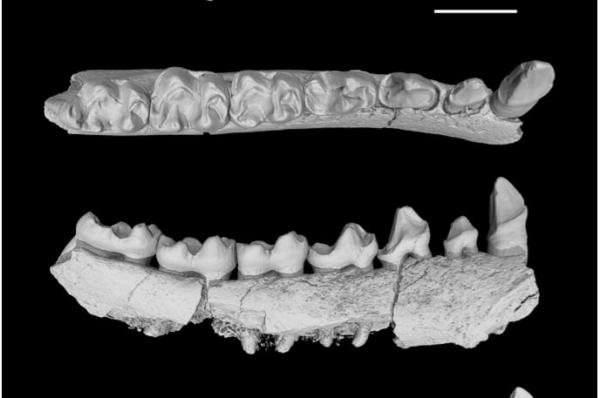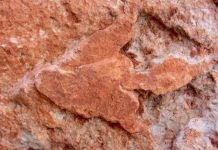
LAWRENCE, Kan., May 5 (UPI) — Roughly 34 million years ago, during what’s known as the Eocene-Oligocene transition, Earth’s atmosphere rapidly cooled. Asia’s colder, drier climate depressed the continent’s primate populations.
Recently, a team of paleontologists unearthed a “mother lode” of primate fossils in South China. The monkey bones offer a glimpse of what life was like for species stressed by ancient climate change.
The story of Asia’s ancient apes is an important part of the story of human evolution, and the latest discovery is helping scientists illuminate what has been a muddied and mysterious portion of that story.
“We had a lot of evidence previously that the earliest anthropoids originated in Asia,” K. Christopher Beard, senior curator at the University of Kansas’ Biodiversity Institute,said in a news release. “At some point, later in the Eocene, these Asian anthropoids got to Africa and started to diversify there.”
“At some point, the geographic focal point of anthropoid evolution — monkeys, apes and humans — shifted from Asia to Africa,” Beard continued. “But we never understood when and why. Now, we know.”
Dramatic climate change during the Eocene-Oligocene transition forced these ape-like predecessors out of Asia and into Africa. The newly unearthed fossils belong to some of the last species to remain on the eastern continent.
Researchers say the ancient climate change is responsible for the density of the fossil record at dig sites in southern China. As the climate cooled to the north, these early primates congregated in the last refuge of warm, wet weather. A continent’s worth of primate biodiversity was squeezed into a relatively small region.
Researchers say their findings — detailed in the journal Science — are reminder of primates’ vulnerability to climate change.
“This is the flip side of what people are worried about now,” Beard added. “The Eocene-Oligocene transition was the opposite of global warming — the whole world was already warm, then it cooled off. It’s kind of a mirror image. The point is that primates then, just like primates today, are more sensitive to a changing climate than other mammals.”






